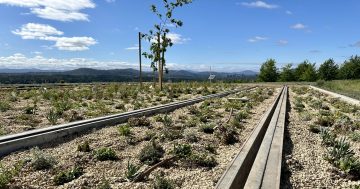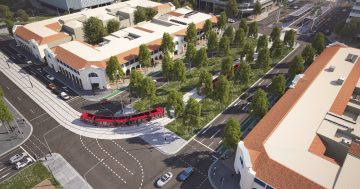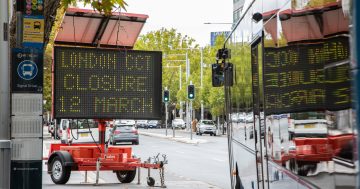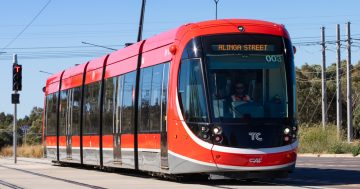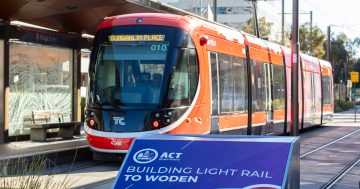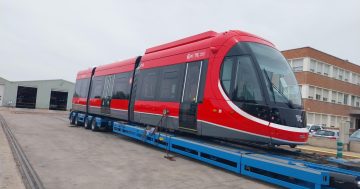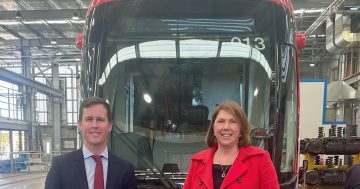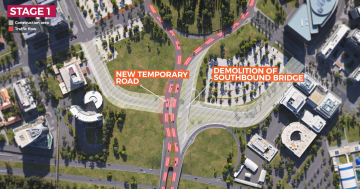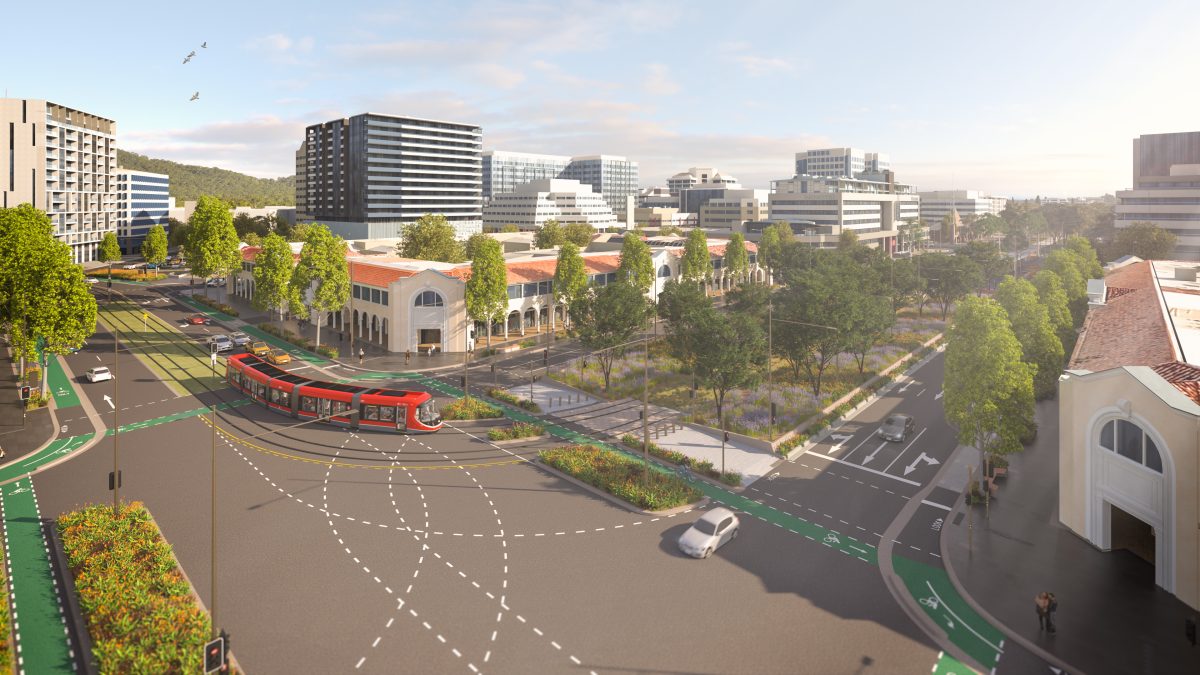
An artist’s impression of the Northbourne Avenue/London Circuit corner showing the vegetated Northbourne Avenue median and a grassed section on London Circuit where the light run will run. Images: ACT Government.
Sections of the light rail track to Commonwealth Park will lie on grass and other plants instead of concrete, and a purpose-built outdoor lab at the National Arboretum will test what species will do best in Canberra’s climate.
A prototype track section will be built at the National Arboretum and include all the supporting infrastructure to simulate the environment where future light rail track slabs will be laid.
Different grass, plant and tree species will be grown in the 20-metre by 30-metre section, which also includes metal track, concrete substructures and a vehicle location system.
Transport and City Services Minister Chris Steel said the government wanted to make sure there were as many opportunities for green space along the alignment as possible.
“They’re a really good solution to counter the urban heat island effect, reduce glare, absorb more rainwater and contribute to noise reduction,” he said.
So far three sites are slated for greening – the median between the heritage Sydney and Melbourne buildings on Northbourne Avenue where low-lying species will be planted; a turfed section on London Circuit in front of the Melbourne Building; and the Commonwealth Avenue median where there will be a grass bed to maintain consistency along this significant thoroughfare.
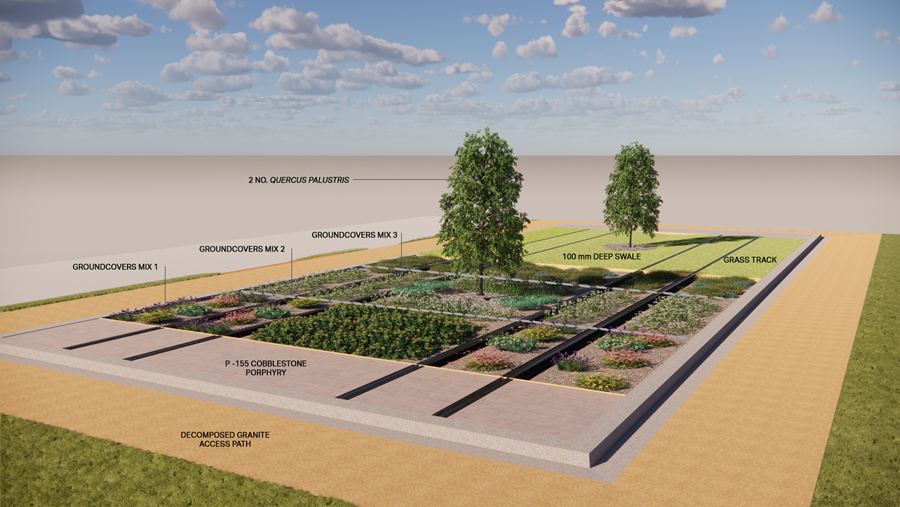
An illustration showing how the trial section at the National Arboretum will look and operate.
The trial at the Arboretum will ensure that the selected grass, groundcover and tree species will flourish in all four seasons of Canberra’s climate.
Supporting infrastructure will also be required to ensure the structural integrity of the prototype, including retaining walls and other finishes that will be applied to the final project, such as cobblestones.
Mr Steel said different turf mixes and irrigation systems would undergo rigorous stress testing in different temperatures and soil types.
“The location is also publicly accessible, just south of the Village Centre near Forest Drive at the Arboretum, allowing the community to preview the design before light rail stage 2A construction begins,” he said.
The prototype will inform the final green track design, construction and maintenance approach to be used on light rail stage 2A.

The start of the Commonwealth Avenue section of light rail, showing grass bedding and trees.
Work is expected to start in September and be finished in December, followed by a 12-month monitoring period.
After that, the prototype will be removed and the area reinstated, with the imported topsoil and irrigation system to stay for future Arboretum use.
Construction on the 1.7-km light rail extension from Alinga Street to Commonwealth Park is expected to start late next year or early 2025, depending on when the Raising London Circuit enabling project is completed.












